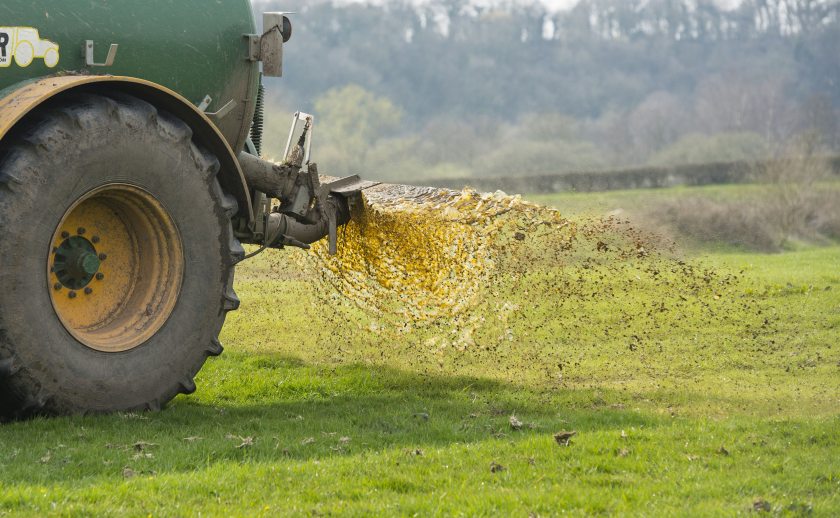
New software will support farmers in taking control of applications to effectively minimise nitrate leaching, helping them meet new and existing regulatory requirements.
Farmers have voiced their concerns over the Environment Agency’s move to potentially limit or prohibit the spreading of manure and slurry as autumn approaches.
However, new software seeks to support them. The water protection module is a key feature of Trinity AgTech’s digital assistant 'Sandy' with sustainability assessment and planning capabilities covering carbon, biodiversity, and agroforestry.
Sandy saw its commercial launch on 9 August and is underpinned by the latest science and years of peer-reviewed field research.
The new software complements the government’s recent expansion of the Catchment Sensitive Farming (CSF) programme to improve water and air quality in high priority areas.
Nitrate levels in fresh water have become an important indicator of pollution. In England, 55% of the country is classified as a Nitrate Vulnerable Zone (NVZ), with agricultural practices accounting for approximately 70% of total inputs of nitrate in water.
Tim Rymer, CEO of JSR Farms, said that it is a constant battle to change the perception that slurry is an asset, instead of a waste product.
“We see mixed farming as the most sustainable model in the UK. We are finding that more UK farmers are incorporating livestock back into their enterprises to increase their organic matter as their soils lose fertility and yields decrease.
“Our forefathers knew the importance of organic manures and at JSR we see our livestock enterprises as manure factories producing what we call ‘liquid gold’.
“Sandy is a tool that has the ability to demonstrate to the Environment Agency that slurry is not a waste product, but a valuable element in our production.
"Its water protection module has been designed using the latest scientific understanding, to help meet the current and future compliance requirements of NVZ.”
Dr Milad Toolabi, Trinity AgTech’s Director of AI-ML Advanced Analytics, was one of the co-developers of Sandy’s water protection module.
He said that the use of two metrics, nitrate leaching and nitrogen uptake efficiency, was important to increase understanding and assessment of leaching at farm, crop and field level.
“Using these two metrics, Sandy’s water protection module evaluates the water pollution state based on the individual farmer’s historic, current, and planned management practices," he said.
“By bringing historic information in alongside real-time data, Sandy evaluates the farm’s leaching state and supports farmers to make informed decisions on their management practices.
"Through our data integrations, this analysis is done in seconds. In comparison, the Environment Agency’s own tool takes an estimated 4-5 hours of data input from the farmer to evaluate a farm’s current leaching state.”
The metrics employed at farm, crop and field level encourage farmers to consider the long-term impact on soil nitrogen dynamics arising from different management practices such as crop rotation and fertiliser application.
The criteria used by Sandy, similar to those already adopted by farmers across Europe, can demonstrate the nitrogen-leaching progress for the current calendar year, set thresholds, and can track the historic yearly weighted average of nitrate leaching.
Farmers can also gain an understanding of the cumulative financial value lost through excess nitrogen leached through the module.
Dr Toolabi said: “The module’s simple-to-use dashboard includes an interactive map where farmers can pinpoint, at field level, areas where leaching occurs most.
"Used alongside the scenario analysis function, farmers can compare the impact management changes – such as no till and introducing cover crops into the rotation - can have.
“In addition, at crop level, Sandy compares the performance of different crops – taking into consideration nitrate leaching and nitrogen uptake - and their efficiency for the last three harvest years."
